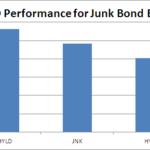FactorShares, a company better known for exotic funds tracking the spreads between dissimilar asset classes (gold and stocks, for example), has launched a new fund tracking the mining service space. The new fund offers a new way to get exposure to a popular asset class – gold and silver bullion – by investing in companies that provide services to the mining industry.
The economics of the mining service sector are vastly different from the economics of the mining business. The PureFunds ISE Mining Service ETF (MSXX) will invest in companies that “manufacture, lease, sell and provide equipment to companies that provide consulting or other services to the industry, as well as companies that actually engage in exploration and extraction,†according to the prospectus.
Mining Service ETF Holdings
Little information is yet public about the PureFunds Mining Service ETF, however, seeing as it will be based on the ISE Mining Services Index, we can use that index as a guideline for the ETF. Here’s a link to the methodology guide from the ISE’s own website.
The underling index and thus the ETF will select stocks of companies which:
- Generate more than 50% of their revenues from mining services.
- Are listed on an exchange available for foreign investment.
- Have a market cap of at least $100 million.
The fund will be market cap weighted, and seek to restrict the top holdings from making up more than 50% of the total index. The index seeks to keep all 5% holdings equal to less than 50% of the index.
As of the latest filing, the ETF contained 30 holdings, most of which will be obscure to American investors. Here are the top 10 holdings as reported by the PureFunds website:
- Atlast Copco AB (STO: ATCOA)
- China Coal Energy (HKG: 1898)
- Joy Global Inc (NYSE: JOY)
- Monadelphous Group (ASX: MND)
- Mineral Resources (ASX: MIN)
- Terex Corp. (NYSE: TEX)
- Major Drilling Group (TSE: MDI)
- Clough (ASX: CLO)
- Boart Longyear (ASX: BLY)
- Maca Ltd. (ASX: MLD)
From the fact sheet, we learn that the names sound obscure because the fund is invested primarily overseas. Here’s the country makeup for the ETFs holdings:

The fund does not hedge its currency exposure, meaning it will be somewhat correlated to the performance of the US dollar. Given the geographical diversification, however, the fund will be most correlated to the performance of the Australian and Canadian dollars.
Mining Services vs. Mining Stocks
Mining services rely on vastly different economics than mining stocks. Whereas mining companies get paid to bring resources to the ground, mining services companies are paid to facilitate the search, recovery, and refinement of resources. To make an analogy, mining companies are the miners in the 1849 Gold Rush and the mining services companies are the enterprising people who sold the shovels to would-be gold miners. Of course we all know how that worked out – the people who make the most money in the search for precious metals are often the people who sell the tools necessary to bring those resources to the surface.
Mining services companies benefit from:
- Growing mining interest and mining company capital expenditures.
- Rising precious metals prices, as higher prices encourages more capital expenditures and exploration.
- The search for minerals in high-cost mines.
I find the mining services sector to be much more attractive than the mining sector as a whole. The mining industry has a natural tendency to expand production too far, too fast when metal prices rise and has historically destroyed shareholder value by diluting shareholder interest to engage in new capital expenditure plans.
This ETF would presumably benefit from that historical tailwind. So long as the world continues to crave gold and silver, and mining companies are willing to spend heavily to chase new opportunity, this ETF should perform very well. According to data from Capital IQ and published in the Wall Street Journal, the top 10 miners generated $88 billion dollars in operating cash flow from 2001-2011, but recorded $89 billion in expenses related to capital expenditures and acquisitions. The mining industry simply doesn’t know how not to spend, which is good for the mining service providers.
At an annual expense of .69% per year, the PureFunds ISE Mining Service ETF (MSXX) is undoubtedly the least expensive way to track the mining services industry all around the world.
Bottomline: This new ETF gives investors a way to go long the metals business by making a wager on the best part of the mining business – the services business. Investors who are long popular mining funds like the Market Vectors Gold Miners ETF (GDX) could hedge their bets against lofty expansion plans by making a targeted investment in the services index. Additionally, for those focused on gold returns in general, these equity sector proxies are often a much better investment from a tax standpoint because gold bullion investments, including the popular GLD ETF have vastly different tax implications.
Disclosure: no position in any tickers mentioned here.











{ 0 comments… add one now }